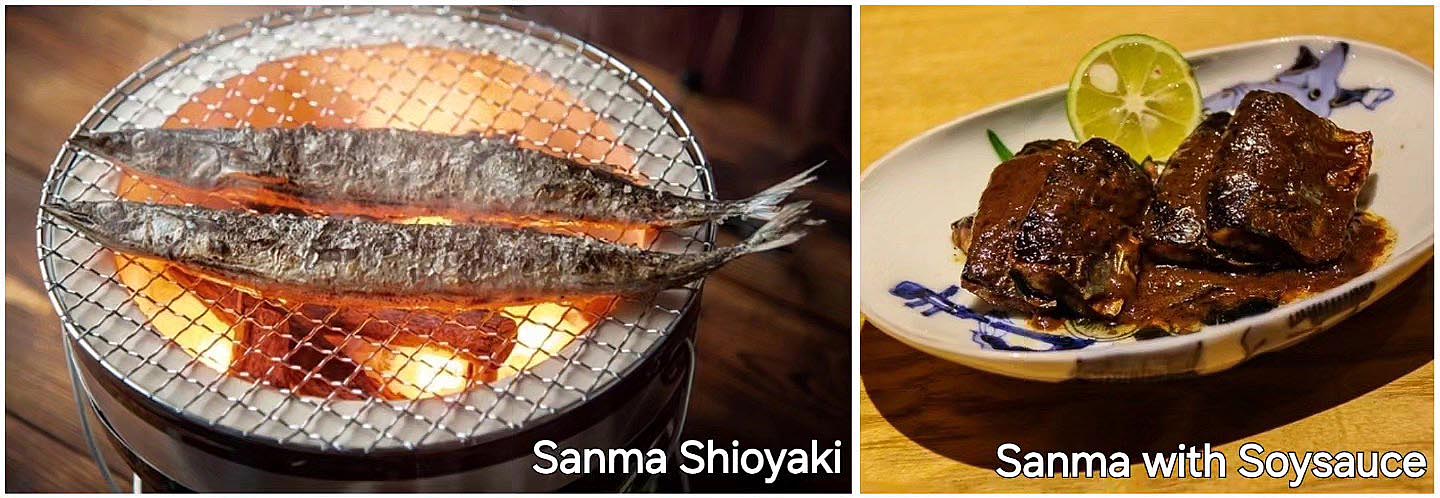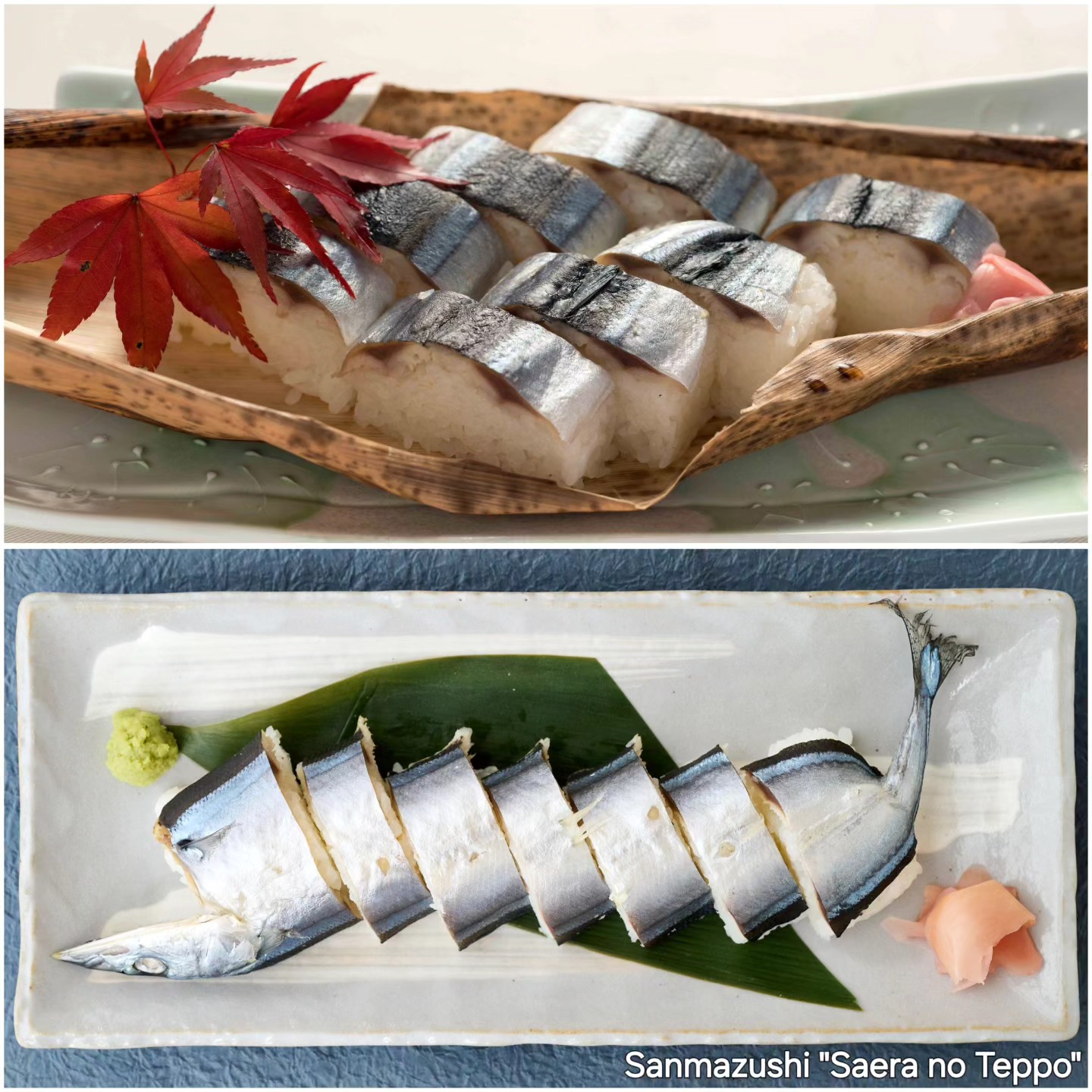
As we are settling quite well into the fall season with the last few days of September, it is the perfect time to introduce Sanma, or pacific saury, the migratory fish which matures starting in September across Japan and, because its written name “秋刀魚” literally means “autumn swordfish”, is representative of the season in Japanese cuisine.
During the fall, large numbers of Sanma travel south on a cold current from the northern prefecture of Hokkaido along the east coast of Japan to lay their eggs.
There are several ways to enjoy this delicacy, but the style you may recognize most is “Sanma Shioyaki” which is when a cleaned, freshly scored Sanma is salt-grilled until it reaches crispy perfection; this version is enjoyed throughout Japan. In some Izakayas, Sanma is chopped and grilled with soy sauce as an appetizer.
Sanma is great for sushi, particularly in autumn, since the fish have been swimming for a long time, making their meat firm and with a desirable amount of fat. Sanma sushi is appreciated across Japan, particularly in the Southern region of Wakayama, the sister state of Florida, which is renowned for it. People in Wakayama believe Sanma from their coastal sea, Kumano-nada Sea, produces the best kind for sushi!
When we make Sanma sushi, the fish is neatly sliced, rinsed with salt, moistened with vinegar, and pressed on top of sushi rice. In Wakayama, it is called “Saera no Teppo”. “Saera” being the local name of Sanma and “teppo” meaning sushi rolls or gun, since the sushi roll resembles the barrel of a gun, and because the small bamboo matt, which is used to make sushi rolls, is also used to press Sanma on sushi rice.
Please be sure to try this seasonal dish next time you visit Japan!












